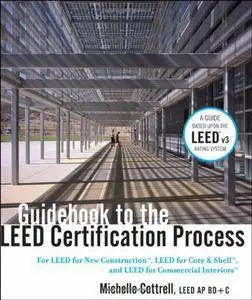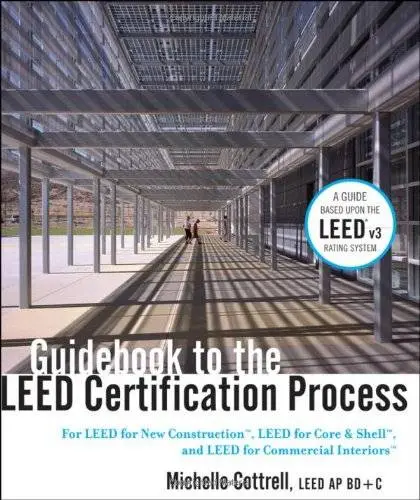Guidebook to the LEED Certification Process: For LEED for New Construction, LEED for Core and Shell, and LEED for Commercial Interiors by Michelle Cottrell
English | 2011 | ISBN: 0470524189 | 352 pages | PDF | 27,7 MB
English | 2011 | ISBN: 0470524189 | 352 pages | PDF | 27,7 MB
Proven Strategies for Getting a Project LEED® Certified
Here is the ideal guide for architects, engineers, interior designers, project managers, facility managers, and building owners for understanding the project certification process for the Leadership for Energy and Environmental Design (LEED?) for New Construction and Major Renovations (LEED NC), LEED for Core & Shell (LEED CS), and LEED for Commercial Interiors (LEED CI) rating systems of the U.S. Green Building Council (USGBC?). Written by an expert who is the President of Design Management Services, a LEED consulting firm?Guidebook to the LEED Certification Process engages readers by outlining the steps, roles, and responsibilities of the team members in a straightforward, chronological manner that helps streamline the certification process.
With the release of the LEED v3 rating systems and a new version of LEED-Online, the Guidebook to the LEED Certification Process helps project teams to streamline the project team efforts and outlines the role of the LEED consultant and project administrator. Written for LEED AP professionals and building owners that need guidance navigating a project through the process, this book outlines each step in the design and construction phases including programming and post-occupancy. Serving as a valuable resource for anyone seeking information on how to get a project LEED certified, Guidebook to the LEED Certification Process features:
An overview of the integrative design process.
Understanding the role of a LEED consultant.
How to build a successful team for a project pursuing LEED certification.
How to register a project with Green Building Certification Institute (GBCI).
Common pitfalls to avoid during the LEED certification process.
Checklists to use during design and construction to keep the team on track.
Ask the Author: Michelle Cottrell Answers the Most Commonly Asked Questions About LEED Certification
Author Michell Cottrell
What are there so many registered projects as compared to certified projects?
Most projects begin with an emphasis on pursuing LEED certification but fail to keep that momentum going during construction. The key is to assign the responsibility to one person to manage the effort from design through construction until the project is awarded certification.
What is the biggest mistake project teams are making?
I constantly am receiving calls after a project is under construction with teams now deciding to pursue certification. Unfortunately, starting the effort this late in the game typically costs more than anticipated as strategies need to be rethought causing the drawings to be revised.
I am not a LEED AP, is this book still useful to me?
The book was intended for professionals that are somewhat knowledgeable about green building strategies and terminology. So it might be helpful to pursue the LEED Green Associate credential to learn this type of information seen throughout the book.
I worked on a project pursuing certification in 2009 under the old NC rating system, how have things changed?
The biggest change to be aware of is the addition of a Water Reduction Prerequisite under the WE category as there was never one before. In addition, the rating systems have been re-weighted as some credits are no longer worth just one point. USGBC also added a new category, Regional Priority, although it does not contain new credits but instead provides bonus points for achieving existing credits depending on a project's zip code. Last, there is a new version of LEED-Online to manage the review process a bit differently!
What is a commissioning agent and are we required to have one?
NIBS defines commissioning as "a quality-oriented process for achieving, verifying, and documenting that the performance of facilities, systems, and assemblies meets defined objectives and criteria." Therefore a commissioning agent should be thought of a second set of eyes on behalf of the owner. The reason being is that most owners do come from a background in engineering to understand why systems might be required, to double check drawings, or to ensure energy related systems are installed and calibrated appropriately. Commissioning is a prerequisite but the commissioning agent (CxA) requirement can be addressed in one of two ways depending on the size of your project. Although someone needs to be assigned the role as a commissioning agent regardless. Should the project be less than 50,000 gross square feet, the CxA is not required to be an independent, third party but can be a member of the design or construction team (just not the engineer of record).



